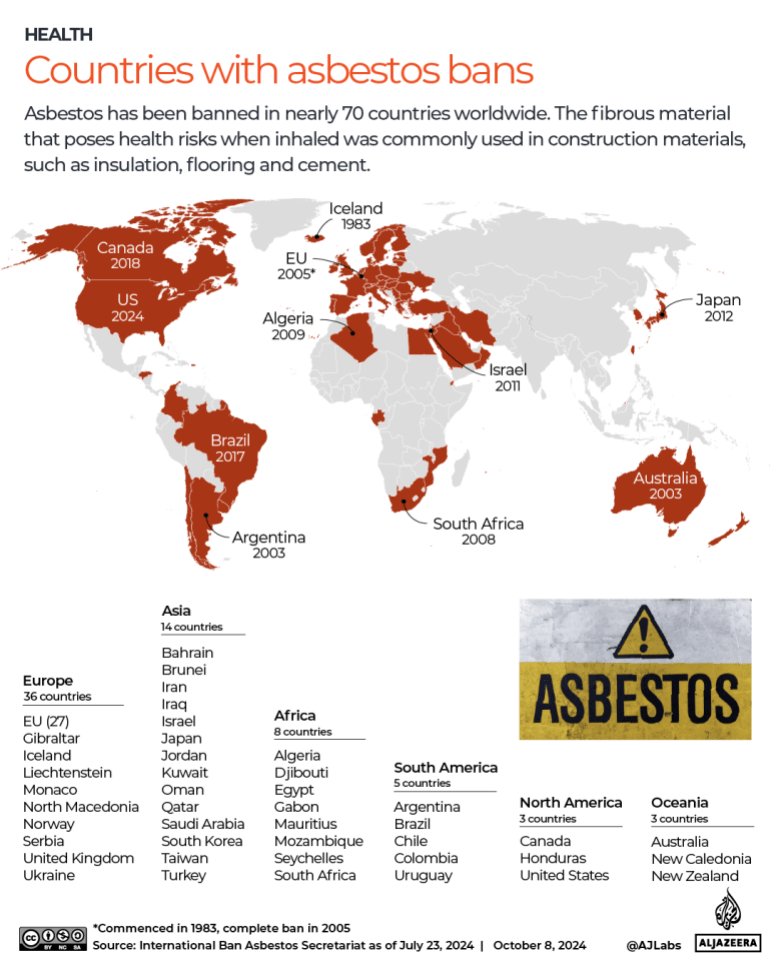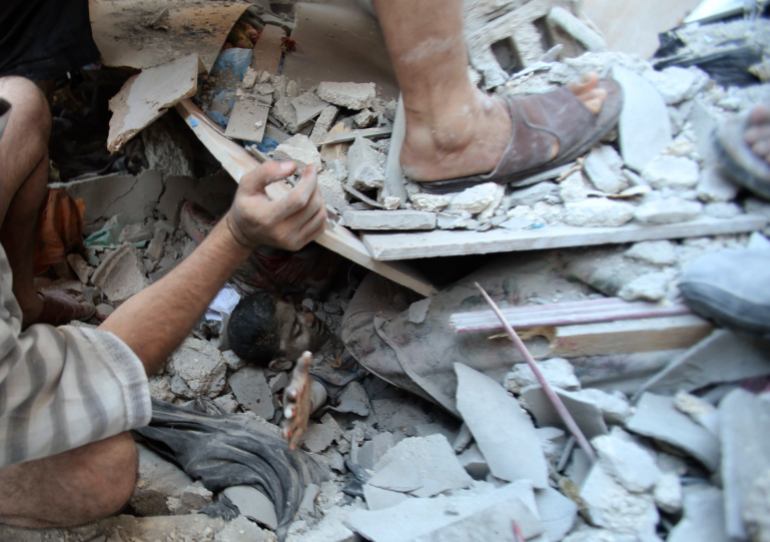Israel’s continuous bombing of Gaza has brought about a new silent threat to the people there – asbestos.
An element that is harmless to humans in its undisturbed state but becomes highly carcinogenic when dispersed into the air, asbestos is widespread throughout many structures in Gaza.
Due to Israel’s bombings over the past year, significant amounts of asbestos have been broken down into tiny particles that can potentially cause cancer in those who inhale them, leading experts to believe that cancer cases in Gaza will be reported for many years to come.
United Nations estimates suggest that about 800,000 tonnes of debris across Gaza may be contaminated with asbestos, which is described as a “death sentence” for the trapped Palestinian population in Gaza by asbestos expert Roger Willey.
‘A tragedy that will unfold in the years ahead’
The exposure to asbestos for those affected by Israel’s bombing raids in Gaza can be likened to the exposure around the World Trade Center during its collapse in New York City on September 11, 2001, according to Willey.
Willey predicted back in 2001 that more people would die from asbestos-related diseases than were killed in the 9/11 attacks.
The comparison to the aftermath of September 11 is crucial as it provided an opportunity to study asbestos exposure following an explosion, as mentioned by Liz Darlison, CEO of the charity Mesothelioma UK. Immediate dangers from conflicts often overshadow long-term hazards, Darlison noted.
The long-term effects of asbestos exposure will be a “tragedy that will unfold in the years ahead”, Darlison mentioned.
In 2016, the United Nations Environment Programme (UNEP) stated that occupational asbestos exposure had caused an estimated 209,481 deaths, representing more than 70 percent of all deaths from work-related cancers.
Ubiquitous asbestos in the refugee camps
Asbestos was widely used in construction until the late 1980s due to its insulating and fireproof properties, with Israel fully banning its use in buildings in 2011.

Israel’s bombings in Gaza have targeted refugee camps where asbestos is found in older buildings and structures, according to UNEP.
No escape, no ‘safe’ level of exposure
Willey recommends getting away from airborne asbestos as far as possible if it is disturbed, which is not an option for the densely populated Gaza Strip.

Clean-up efforts for asbestos can take years and should be handled by professionals, according to Willey.
Darlison stressed that there is no safe level of exposure to asbestos after an explosion that releases it, and specialized equipment is required for handling such situations.
Recognizing the devastating impact of asbestos, Darlison expressed concern for the ongoing legacy of the war in Gaza.






